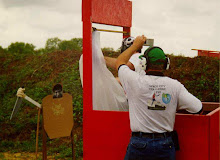The death this last weekend of Dan Weldon brings back a post that I have been milling for a while. It started back when Jimmy Leeward crashed in Galloping Ghost out in Reno.
The question is, "What is an acceptable risk?"
This is different for everyone. I am sure that both of these men died doing what made them happy. For sure, both of them understood the risks they were taking and the steps taken to mitigate them. However, the idea that they could actually die doing this was a definite factor. Now, there are calls on all fronts for improvements to make things safer. Air racing has already gone through tragedy and as a result, crowd separation was increased. Unfortunately, in this case it was just not quite enough. So, how far do the spectators have to be moved away to make it acceptable and who determines that distance? The general public now at least here in America expect a fairly high level of safety for them when they attend professional events of any kind. In this lawsuit happy nation of ours it is pretty much standard that you are not going to get hurt and every ticket has a disclaimer that is just slightly less worthless than the paper it is printed on.
Ever been to a road rally race overseas? Ever seen video or pictures of one? Spectators are standing in the middle of the track trying to get a picture or just to show how brave they are. Right up until the race car comes screaming down a dirt road around a corner barely in control and misses them most of the time. When thing go all pear shaped in one of these races, it is usually quite spectacular.
Contrast that with a NASCAR or IRL race here in the states. The walls of the tracks have the new safer barrier, there is a huge catch fence over the top of the barrier to keep the cars from climbing up into the crowd. There are safety zones even in front of the grandstands that they try to keep people out of between the stands and the fence. Yet, there have still been instances of fans getting hit by tires, body panels off the cars and flaming liquids from crashed cars. How safe is safe enough and what is an acceptable risk?
Now, every year the ruling bodies make tweaks to the race vehicles to improve safety as well as to hopefully make the show better for the fans. You know this is all entertainment that is bought and sold don't you? The drivers safety protection improvements go into car / plane design such that the risks are reduced with each improvement. After Dale Sr died in his crash, the HANS device was required in NASCAR. Analysis was done to find most likely cause then ideas of how to prevent this from happening again were investigated and solutions were implemented in the rules.
When Galloping Ghost crashed, there was much made of the fact that there was no explosion or fireball. Well, aircraft racing had caught up with auto racing and the fuel cells that were originally designed for aircraft and improved for autos was brought back to aircraft and prevented the massive fireball from atomized fuels.
So how safe is safe enough and how safe is ridiculous?
We have Global Hawks, Predators and Reapers flying all over the world controlled by technicians in bunkers in the US South West. So, how about the drivers sit in their coaches and drive their cars from video game consoles in there? That way if a crash happens, they aren't even in the car to get hurt. For that matter, fans could still get hurt. So, since the input to the cars control is already digital, we just virtualize that and they race is not on the computer. Fans can tune in on their TV or game console and watch the "race" as it happens. Poof, no more rain delays!!!! Now, no one can possibly get hurt during a race. Just think of how much safer this would be.
Sorry, but there will always be risk. Just getting up in the morning comes with risk. Going to work each day involves some risks. Driving like a nutbag on the roads or even driving very conservatively on the roads involves some risk. At least on the racetrack, you know the other person next to you has at least some level of training and competency and knows pretty much that both of you are headed for the same goal. Not like the public roadways where the person next to you is just as likely to be a self absorbed sociopath as they are to be a concerned careful driver.
So, what is "acceptable risk" and who determines it?
What say you?
Girls With Guns
3 hours ago





No comments:
Post a Comment